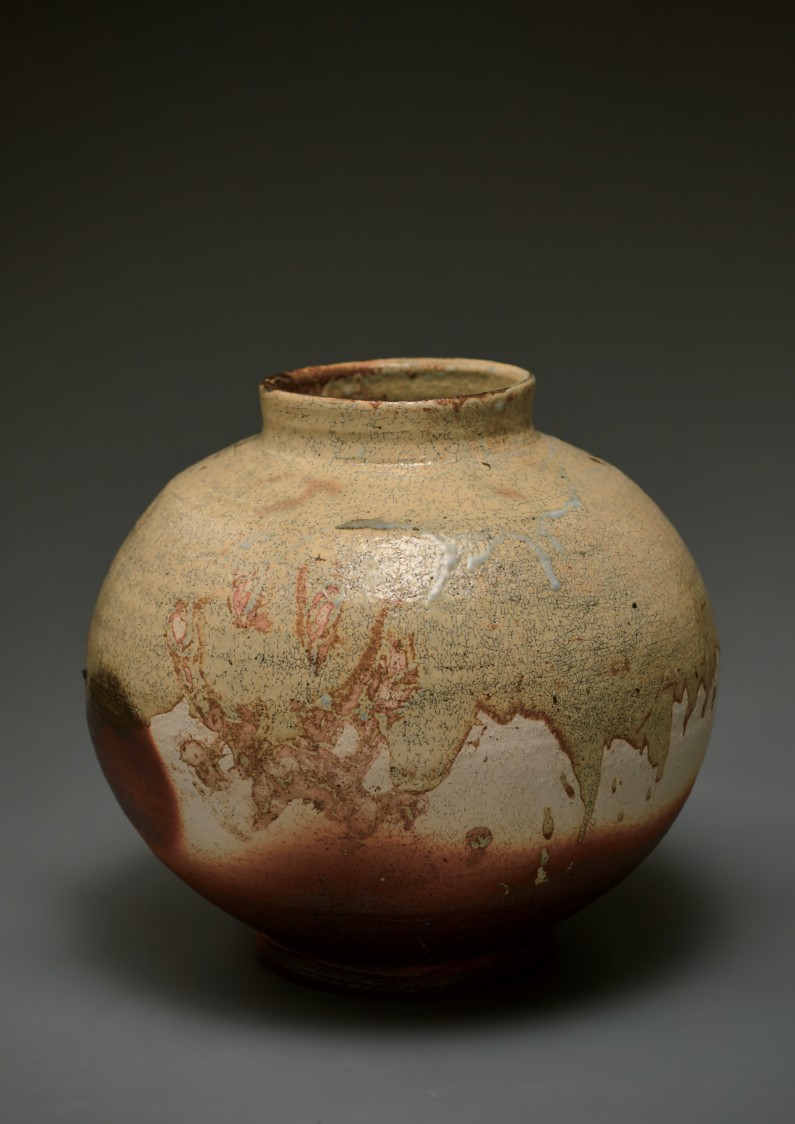
Born in Kanagawa Prefecture in 1970, Kazuhiko Kudo studied traditional pottery techniques in Shigaraki, Shiga Prefecture, before moving to Asahikawa, Hokkaido, where Kenbuchi clay is produced.Though roughly 200 million years old, this ancient clay had never-before been used for ceramics—until now.
After five years dedicated to studying Kenbuchi, the yellow kohiki technique was developed. As the name implies, the technique allows one to pull a beautifully subtle shade of yellow from the clay. I uses the yellow kohiki technique in his work, creating truly original pieces that all begin with ancient materials.
1970年、神奈川県に生まれた工藤和彦は、滋賀県信楽で伝統的な陶芸技術を学んだ後、剣淵粘土が堆積している北海道に移り住んだ。
その剣淵粘土を5年間研究し、開発されたのが「黄粉引」の技法です。土の中から美しく微妙な色合いの黄色を引き出すことができる技法です。私はこの技法を用いて、古来から伝わる素材を使ったオリジナル作品を制作しています。
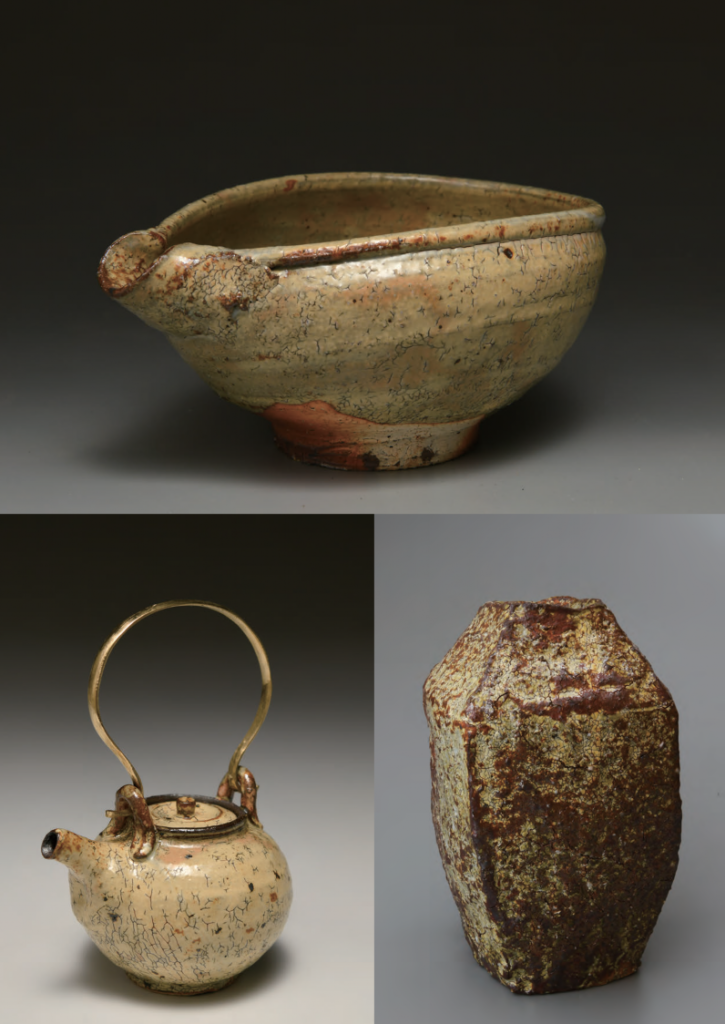
The Yellow Kohiki 黄粉引
Beautiful yellow color extracted from ancient clay.
古代の粘土から抽出された美しい黄色い色。
The bright red color is due to the shells.
鮮やかな赤色は、貝殻によるものです。
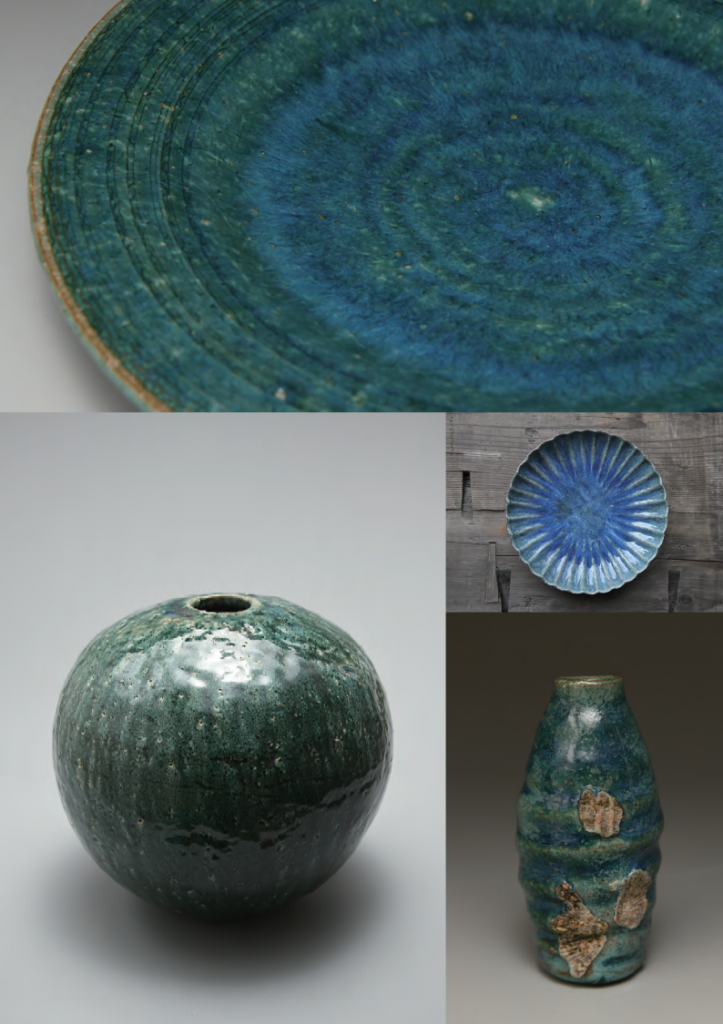
The Green Kohiki 緑粉引
Pursuit of deep forest green. 北海道の森の深い緑を追求。
It was difficult to produce a beautiful green color with the clay I use, but after 10 years of research, I developed a unique technique.
私が使っている粘土では、きれいな緑色を出すのは難しかったのですが、10年かけて研究し、独自の技法を開発しました。
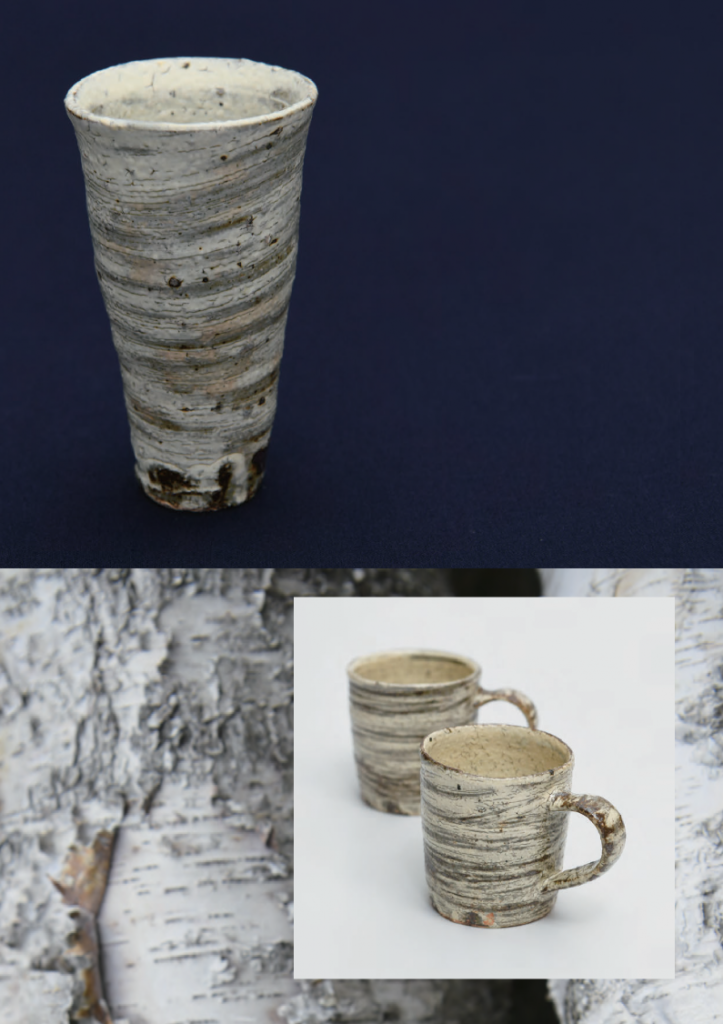
The white birch Hakeme 白樺刷毛目
I have many birches around my studio.
However, they are not easily seen outside of Hokkaido.
I like the neat appearance of birch, so I wanted to incorporate it into my work.
The ashes from burning birch were used as the glaze material, and the traditional Japanese technique of brushstrokes was used to express the bark of the birch.
私のスタジオの周りには、たくさんの白樺があります。
しかし、北海道以外ではなかなか見ることができません。
私は白樺の端正な佇まいが好きなので、作品に取り入れたいと思いました。
白樺を燃やした灰を釉薬の材料として使い、日本の伝統的な筆の技法で白樺の樹皮を表現しています。
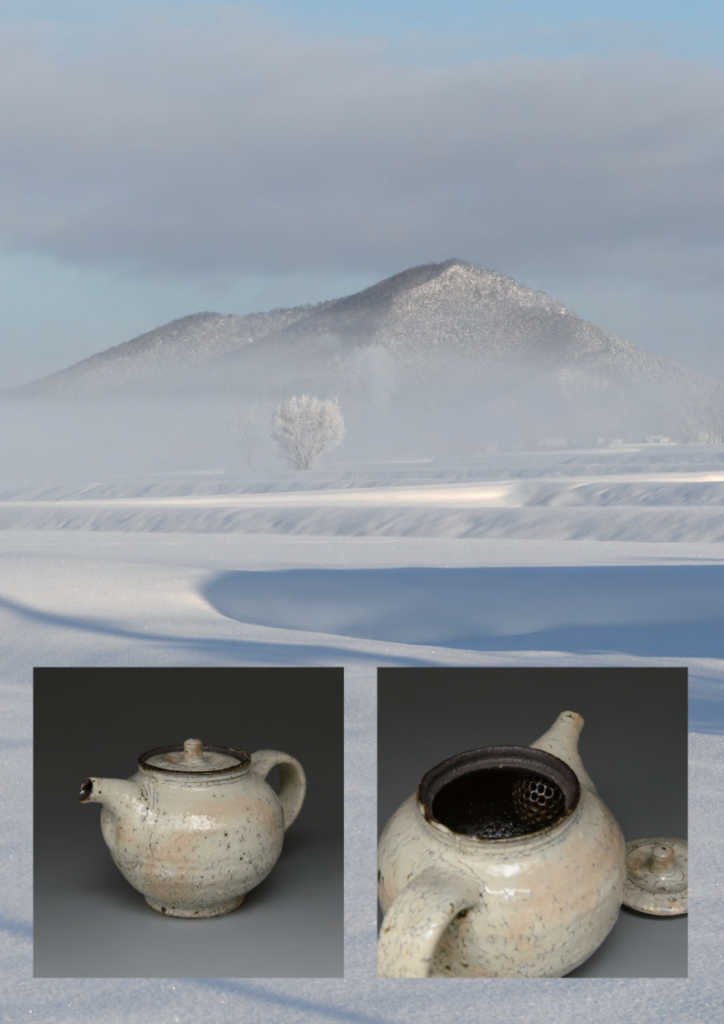
The White birch Kohiki 白樺ホワイト
The winters in Asahikawa, where I live, are the coldest in Japan, sometimes reaching 30 degrees below zero.
It is very harsh for ceramic artists. This is because moist clay freezes. The temperature and humidity in the studio must be constantly controlled.
However, the landscape of snow fields covering the land is very beautiful.
Depending on the sunlight, they change from blue to white and from white to pink.
I make white vessels by painting white mud on clay.
My works is like a snow field composed of various shades.
私の住む旭川の冬は日本一寒く、氷点下30度にもなることがあります。
陶芸家にとってはとても過酷な環境です。水分を含んだ粘土が凍ってしまうからです。工房内の温度と湿度を常にコントロールしなければなりません。
しかし、大地を覆う雪原の風景はとても美しいです。
陽の光によって、青から白へ、白からピンクへと変化します。
私は粘土に白い泥を塗って、白い器を作っています。
私の作品は、様々な色合いで構成された雪原のようなものです。
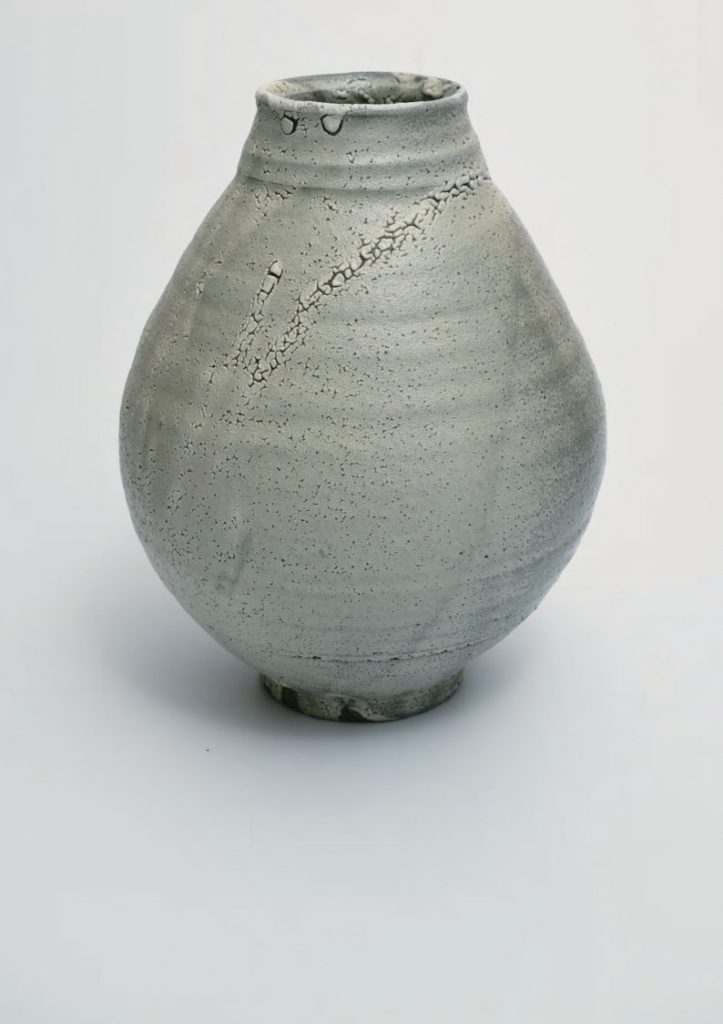
The Sea of Okhotsk オホーツク海
The Sea of Okhotsk extends to the east of Hokkaido.
In winter, drift ice from Russia fills the sea.
Some peoples came to Japan by walking across the frozen sea in prehistoric times.
I collected stones from the beaches of the Sea of Okhotsk to use as materials for glazes.
Gray with a faint blue tinge, reminiscent of the Sea of Okhotsk
北海道の東にはオホーツク海が広がっています。
冬はロシアからの流氷が海を埋め尽くします。
太古の昔、この凍った海を歩いて渡って日本にやってきた民族がいるそうです。
私はオホーツク海の砂浜で石を集め、釉薬の材料としました。
オホーツク海を思わせる、かすかに青みを帯びたグレーが印象的です。


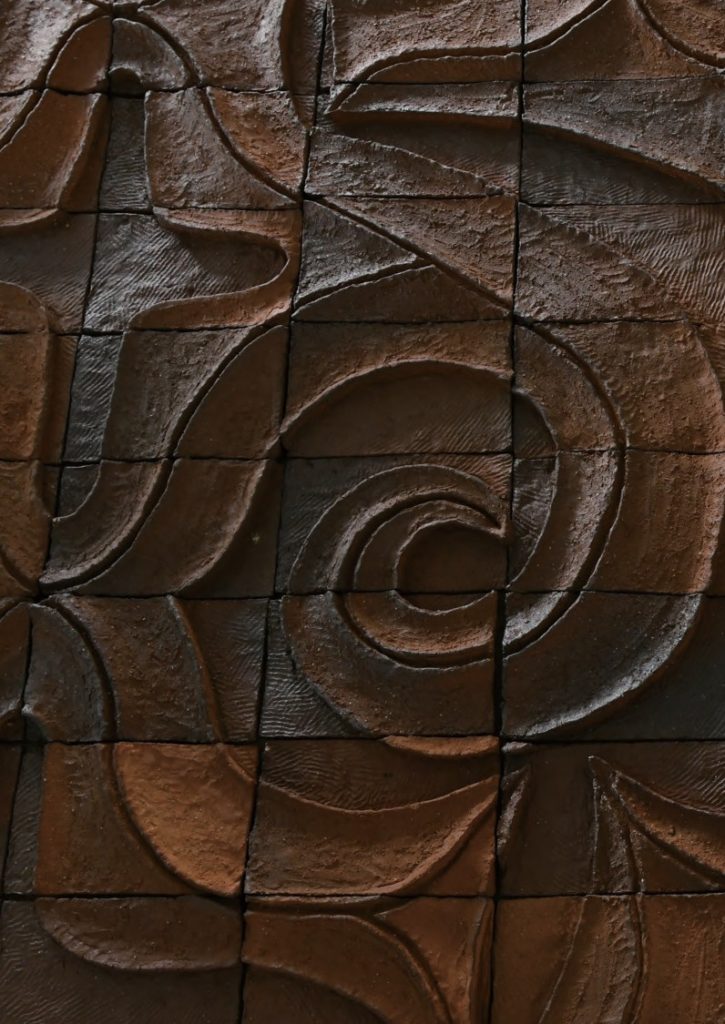
THE SOURCE 根源 (2019) HYATT HOUSE NISEKKO
“THE SOURCE” is based on the Jomon’s unique Nawame pattern and formed the Ainu pattern.
The magical designs of the Ainu patterns are based on the dignity and awe of nature, which is directly inherited from the Jomon period.
The Jomon was a long-term culture that lasted for more than 10,000 years and is considered the root of Japanese culture.
Of particular note is that Jomon culture laid the foundation for Japan’s unique nature beliefs.
In Hokkaido, Jomon nature beliefs were passed down to the Ainu, and have had a profound influence on Ainu culture.
Outside of Hokkaido, Japan has developed at a dizzying pace to the present day, with influences from other countries, but in all situations, nature worship has always been important.
For example, when Buddhism was introduced to Japan, it did not exclude nature beliefs, but created its own third path called “Shinbutsu Konko,(Coalescence of Faith)” which was unthinkable in the original Buddhism.
We can see glimpses of nature worship even today, not only in religion, but in every aspect of art, philosophy, lifestyle, and way of thinking.
I believe that in the most important spiritual mainstay of the Japanese people to be what it is, we should be aware of, learn more about, and cherish “nature beliefs.
I am convinced that this will ultimately lead us to live with dignity as Japanese people in the international community.
In addition, I believe that faith in nature is most effective when it is paired with the beauty and abundance of nature. It is also important for us to seriously face “Japanese nature” once again.
My work, we hope that Japanese people will realize their latent nature beliefs, and that visitors from overseas will discover the nature beliefs that the Ainu and Japanese people have cherished, and together, we hope that they will consider how human beings should live in harmony with nature.
We have named the work “SOURCE” in the hope that the invention of “nature belief,” a way of relating to nature and humankind that has been nurtured over more than 10,000 years, will continue to exist universally in the future.
According to current archaeology, the oldest pottery in the world is considered to be Jomon. However, Jomon pottery techniques were not handed down to the Ainu in Hokkaido. The act of using Hokkaido clay to form Ainu patterns and firing them in a wood-fired kiln is for me a journey back in time, from the Jomon period to the beginnings of Ainu culture. It was a very significant experience for me as a Hokkaido ceramic artist.
作品「根源」は、縄文時代の独特の縄目文様をベースに、アイヌ文様を形成した作品です。
アイヌ文様の不思議なデザインは、縄文時代から直接受け継がれた自然への尊厳と畏怖の念がベースになっています。
縄文は1万年以上続いた長期的な文化であり、日本文化のルーツです。
特に注目すべきは、縄文文化が日本独自の自然信仰の礎を築いたことでしょう。
北海道では、縄文の自然信仰がアイヌ民族に受け継がれ、アイヌ文化に大きな影響を与えています。
北海道以外では、日本は他国の影響を受けながら目まぐるしく発展して今日に至っているが、どのような場面でも自然信仰は常に重要視されてきました。
例えば、日本に仏教が伝来したとき、自然信仰を排除することなく、本来の仏教では考えられなかった「神仏混淆(しんぶつこんこう)」という独自の第三の道を作り上げました。
宗教だけでなく、芸術、哲学、ライフスタイル、考え方などあらゆる面で、現代でも自然信仰の片鱗を見ることができます。
私は、日本人の最も重要な精神的支柱がそうであるためには、「自然信仰」を意識し、学び、大切にすることが必要だと考えています。
それが結果的に、国際社会の中で日本人として尊厳を持って生きていくことにつながると確信しています。
また、自然への信仰は、自然の美しさや豊かさと対になってこそ、その効果を発揮すると思います。今一度、私たちが「日本の自然」と真剣に向き合うことも大切なことです。
私の作品で、日本人が潜在的に持っている自然信仰に気づいてもらい、また、海外から来た人がアイヌや日本人が大切にしてきた自然信仰を発見し、一緒に人間が自然とどう共存していくべきかを考えてもらえればと思います。
1万年以上にわたって培われてきた自然や人間との関わり方である「自然信仰」の発明が、今後も普遍的に存在し続けることを願って「根源」と名付けました。
現在の考古学では、世界最古の土器は縄文式土器とされています。しかし、縄文土器の技術が北海道のアイヌに伝わったわけではありません。北海道の土でアイヌ文様を形成し、薪窯で焼くという行為は、私にとって縄文時代からアイヌ文化の始まりへとタイムスリップするようなものです。北海道の陶芸家として、とても有意義な体験でした。